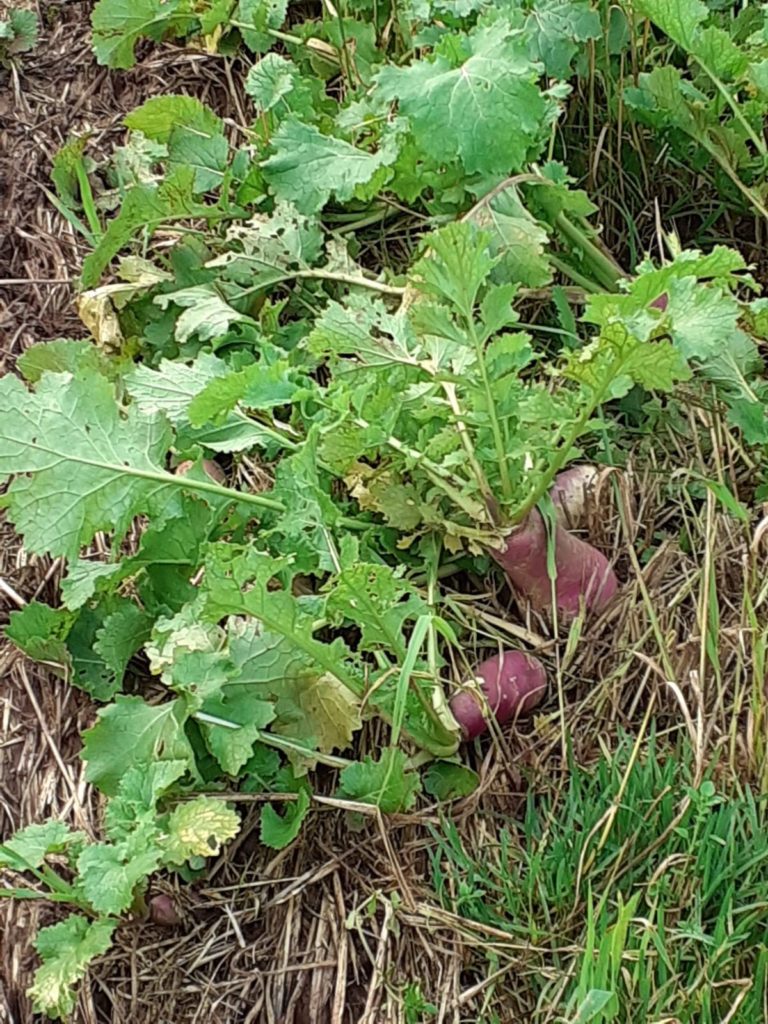Establishing Forage in a Standing Crop
27 July 2021To boost winter forage supplies, there is an option to broadcast fast growing crops such as stubble swedes, rape or hybrid brassicas in to standing arable crops now. This would ideally be done 10 days prior to harvest. The forage crop would emerge under the canopy, where it would gather dew and any rainfall, as well as getting protection from weather and pests. At harvest of the barley, the fodder plant would be at Cotyledon stage, it would be exposed to the light and get a slight dressing on nitrogen and then grow rapidly.
Fertiliser requirements depend on the previous crop, rain fall and soil type. Recommendations can be found in FAS technical note TN733.
This method was done in 2020 at SRUC’s Easter Howgate, were the stubble swedes were broadcast on the 28th July into the standing barley, the barley was harvested 10 days later, on the 8th August. There were no cultivations for this forage crop and a small dressing of nitrogen after harvest. Lambs then grazed this from 28th September (9 weeks from broadcasting) followed by ewes until Christmas. The only cost for this bank of forage was the seed, fertiliser, fuel and time to broadcast the crop.
The crop was analysed for yield and dry matter, with the following results.
| Easter Howgate 2020 | |
|---|---|
| Leaf Dry Matter Yield | 2.21 t/ha |
| Bulb Dry Matter Yield | 2.67 t/ha |
| Total Fresh Yield | 52.42 t/ha |
| Total Dry Matter Yield | 4.88 t/ha |
| Dry Matter | 9.82% |
This option of establishing forage, offers a cheap and effective method, the crop can be used for finishing lambs, grazing ewes, or keeping cattle outside for longer prior to housing, reducing the use of straw.
Kirsten Williams, kirsten.williams@sac.co.uk
Sign up to the FAS newsletter
Receive updates on news, events and publications from Scotland’s Farm Advisory Service

